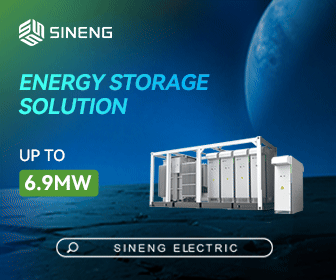Electric Bar Boom Sets Cobalt Up for Massive Price Spike
Facing an acute shortage of cobalt coupled with challenging bottlenecks in the existing supply chain, 'blue metal' mania has taken hold. Keeping a close eye on the industry include: Tesla, Inc. (NASDAQ: TSLA), Apple Inc. (NASDAQ: AAPL), FMC Corporation (NYSE: FMC), BHP Billiton Limited (NYSE: BHP), Pure Energy Minerals Limited (OTC: PEMIF).
Prices are shooting up, hedge funds are hoarding physical supplies, and buyers are wondering where the next shipments are going to come from to feed the phenomenal progression of the electric vehicle (EV) revolution and massive battery gigafactories.
First, it was lithium that shot through the roof and made millions for those who invested in it. Those who got in on lithium at the right time saw returns as high as 2,000 percent. But lithium is only one key component of the lithium-ion battery-the backbone of the latest energy revolution. Cobalt makes up some 35 percent of this mix, and it's shaping up to be Tesla's (NASDAQ: TSLA) bigger concern.
North America produces only about 4 percent of the world's total cobalt supply-not enough to put a dent in the demand coming from Tesla's new gigafactory in Nevada, which started producing batteries in January.
Now this massively overshadowed battery element is set for an explosion in demand that will blow lithium away. There simply isn't enough. North America isn't even on the cobalt map, and this game is definitively about finding new, ethical supply.
"Cobalt is the next big bet," says Wayne Tisdale, a legend in the small-cap mining industry, who found and financed lithium darling Pure Energy and is now CEO of Scientific Metals (STM.V; SCTFF), which is focusing on an all-American cobalt story.
In this game, the money is made by people who "look for early signs of both, need and shortage in a particular commodity, find overlooked and inexpensive assets in that space, and then hire really smart people who will lead you where you need to go", Tisdale told Oilprice.com.
So far, it's a winning strategy. Tisdale helped launch Pure Energy (OTCQB: PEMIF) right in Tesla's gigafactory backyard, targeting new lithium supplies right before the lithium craze, and now he's doing the same with cobalt.
Let the Hoarding Begin...
Global demand for cobalt is already set to exceed supply this year by 900 tonnes, and after that we'll be looking at 20 percent demand growth year on year, in tandem with the growth of the EV industry, making cobalt the most coveted commodity on the market.
This is great for sellers, but buyers are in a panic. The battery industry is already using some 42 percent of global cobalt production, and industrial and military applications are sucking up the rest. The supply equation is already fantastically tight, without even accounting for the massive forward movement of the EV segment.
Tech giants such as Apple, Microsoft and Samsung are under increasing pressure to source ethical supplies of cobalt.
And major miners like Freeport McRoRan (NYSE: FMC) and BHP Billiton (NYSE: BHP), who produce cobalt are doing it largely as an afterthought. The bulk of the world's cobalt mined and brought to market is just a by-product of nickel or copper, and when it's not economical to mine either, the cobalt supply picture further tightens. We need pure play projects-and if it's all-American, all the better.
Tesla's massive $50-billion market cap says all we need to know about EV growth. The company is redefining the auto industry. Tesla launched its $5-billion battery gigafactory in Nevada in January, and by the end of 2017 it will have doubled the world's battery production capacity. This alone will result in an acute shortage of cobalt, and the small-cap explorers, like Scientific Metals, who may offer up new, ethical North American supply are well-positioned to take advantage of this conundrum.
Last year, EV industry production grew 41 percent. Now, sales are up more than 60 percent year on year. The EV market has grown over 15 times, with an amazing compound annual growth rate of over 72 percent from 2011-2016. This year, analysts expect it to gain another 25-26 percent.
The supply chain is in trouble if we don't get new, ethical sources online. At least half of the world's supply comes from the Democratic Republic of Congo (DRC), where 'conflict minerals' are mined. The auto industry doesn't like to source its cobalt from here because connections to this unregulated supply chain that uses children as miners is a major reputational risk .
Tisdale-whose focus is on ethical new sources of cobalt-is ready to take full advantage of what cobalt traders called a "complete vacuum" in interviews with the Financial Times on 23 February.
February saw major cobalt acquisition initiatives by hedge funds from Switzerland to China. The hedge funds' stockpiling of cobalt then caused a mad rush on securing new shipments, according to a 23 February Financial Times article.
Swiss-based Pala Investments and China's Shanghai Chaos scooped up some 6,000 tonnes of cobalt and put it in storage. That's the equivalent of 17 percent of 2016 global cobalt production, and it's worth around $280 million at today's prices. When they take it out of storage it is likely to be worth much more.
Until now, there hasn't been much to choose from outside of pure cobalt companies listed in China, so hedge funds have been buying up the physical metal in a seriously bullish mentality. One trader told the Financial Times that they decided that buying physical cobalt was the only way to get proper exposure to the cobalt price.
This is the definitive second phase in the battery battle, and while lithium was the poster child for the first phase, now it's all about cobalt-and speculators are betting big as prices move up ahead of a major shortage.
Since November, cobalt prices have jumped more than 50 percent, and this is only the beginning.
Infomine | www.infomine.com









